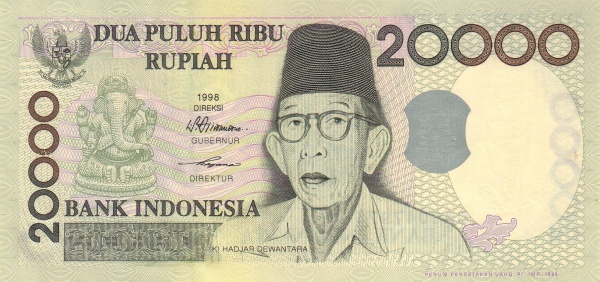Today is Vinayaka (Ganesha) Chaturthi. It is considered as the birth day of the elephant headed God. The legend of his birth is very popular.
Parvati created him and requested him to guard her chamber. When Shiva returned, he saw Ganesha guarding the chamber. Ganesha did not allow Shiva to enter the chamber. This angered Shiva and he beheaded Ganesha.
After realising that it was his son, Shiva brought him back to life. An elephant's head was placed as a replacement for the missing head. Shiva then made Vinayaka the leader of his Gana army. This is how he came to be known as Gana Athipathi or Ganapathi.
The image of Ganesha is the most popular Hindu icon. It is even very popular in the most populous Muslim nation which was once a Hindu nation, Indonesia.
If you take a look at the 1998 Indonesian bank note for 20,000 Rupiah, you can see an image of Ganesha on it. There is a story for this.
Back in 1990s, Indonesia was going through several crisis. It was under the rule of Suharto. The 1997-98 Asian financial crisis hit them hard.
It is rumoured that Suharto consulted a Hindu astrologer and asked for a solution. He wanted the country to overcome the obstacle. The astrologer suggested that he print the image of Ganesha on the bank notes. Ganesha will remove the obstacle for Indonesia.
The government published the bank notes with images of Ganesha on 19 February 1998. During the next few months, the country saw widespread unrest. It escalated into the anti-Chinese riot causing Suharto to resign on 21 May 1998.
The astrologer was right. Indonesia's biggest obstacle at that time was actually Suharto and Ganesha removed him! Surprisingly, Indonesia has shown progress ever since then.





Interesting post. Thanks to share with us. Get in touch with Astrologer Sharma Ji, who offered effective solutions to many customers all over Canada. Top Astrologer in Scarborough | Hindu Astrologer in Scarborough | Good Astrologer in Scarborough | Famous Astrologer in Scarborough
ReplyDelete